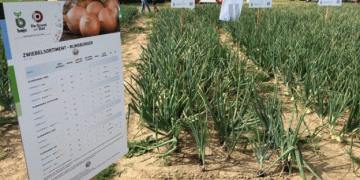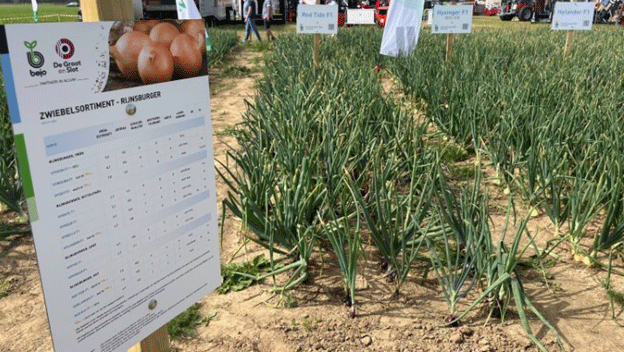Germany’s Growing Role in European Onion Production
Recent statistics from Eurostat reveal that Germany’s onion production has surged by 19%, harvesting 760,000 tons in 2023—a notable increase from the previous year. This significant growth underscores Germany’s rising prominence in the European onion market, further contributing to a 3.2% rise in overall onion production within the European Union, bringing the total to 6.4 million tons. The driving force behind this increase has been higher yields, particularly in regions close to the Dutch border, where onion cultivation has expanded by over 1,000 hectares.
The Netherlands remains the largest producer in the EU, accounting for 25% of total onion production, but Germany’s rapid growth positions it as a significant competitor. In fact, Germany has now surpassed Poland, which saw its onion production decline by 2.5% to 634,000 tons in 2023, mainly due to reduced cultivation area.
Factors Behind Germany’s Onion Production Growth
Several key factors have contributed to Germany’s impressive rise in onion production:
- Improved Yields: In contrast to the poor harvest of 2022, German farmers achieved an average yield of 44 tons per hectare in 2023, aligning with normal output levels. This improvement follows a year of challenging weather conditions that previously hampered production.
- Expansion of Cultivated Land: The expansion of onion-growing areas, particularly in the regions near the Dutch border, has played a crucial role. With an additional 1,000 hectares devoted to onion cultivation in 2023, the total onion-producing area in Germany now exceeds 18,000 hectares.
- Cross-Border Trade and Labeling: Many of the onions produced in Germany are marketed through Dutch companies, with some German onions being sold under Dutch labels. This cross-border trade highlights the interconnected nature of the onion supply chain in Western Europe.
Impact on European Onion Market
Germany’s increased production has strengthened its position in the EU onion market, reducing its reliance on imports and increasing its export potential. Despite this growth, the Netherlands continues to dominate with an output of 1.6 million tons in 2023, harvested from nearly 35,000 hectares.
Poland, traditionally a major onion producer, experienced a slight decline in both production and cultivated area, partially offset by demand for Dutch onions that are unsuitable for retail but still valuable for industrial purposes like peeling and processing. This dynamic helps stabilize the market for lower-quality onions, ensuring that surplus produce is still put to use.
Meanwhile, Eastern European countries such as the Czech Republic and Hungary remain relatively small players, with annual production of 60,000 tons and slightly more, respectively. Spain, another notable producer, saw its output decline from 1.4 million tons in previous years to 1.2 million tons, reflecting a reduction in cultivated land.
Germany’s rise as an onion producer signals a shift in the European onion landscape, with the country now solidifying its place as one of the top growers in the region. Although still trailing the Netherlands in total output, Germany’s increasing cultivation area and higher yields indicate that it will continue to play a larger role in the EU’s onion market. With further expansion and improved cultivation techniques, Germany’s onion industry is likely to grow even more in the coming years, benefiting both local farmers and the broader agricultural economy.































